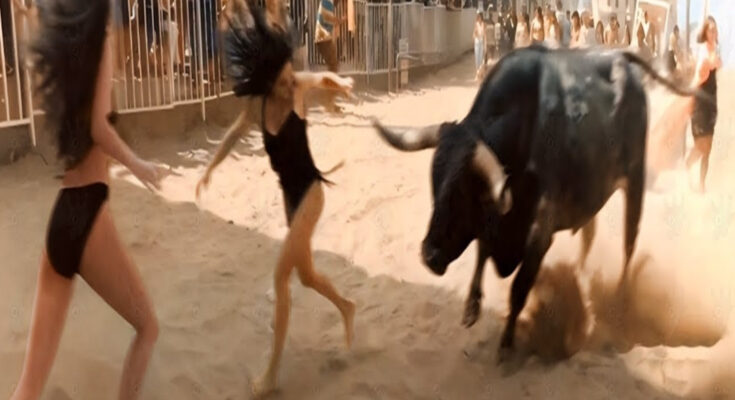Instances where animals go on rampages and are caught on camera can be both fascinating and sometimes frightening. Here are a few notable examples:
1. **Elephants**: In regions where human settlements encroach on elephant habitats, incidents of elephants going on rampages are not uncommon. These can involve elephants damaging crops, vehicles, and even houses. Such events highlight the conflict between human development and wildlife conservation.
2. **Bulls**: During bull runs or festivals like the famous “Running of the Bulls” in Pamplona, Spain, bulls can become agitated and charge through streets, causing chaos and sometimes injuring people. These events are often captured by numerous cameras due to their popularity and spectacle.
3. **Wild Boars**: Wild boars, especially in urban areas where their natural habitats overlap with human settlements, can sometimes become aggressive. Instances of wild boars rampaging through streets, parks, or residential areas have been captured on camera, showcasing the challenges of managing wildlife in urban environments.
4. **Bears**: Encounters with bears in residential areas or camping grounds can result in dangerous situations. Bears looking for food may break into homes, cars, or campsites, leading to property damage and potential human-wildlife conflicts. Cameras have captured such incidents where bears are seen rummaging through trash or causing havoc.
5. **Monkeys**: In regions where monkeys are prevalent and accustomed to human presence, they can sometimes become aggressive or cause damage to property. Instances of monkeys raiding homes, stealing food, or even attacking people have been recorded on camera, highlighting the complexities of coexisting with wildlife in urban settings.
These incidents underscore the importance of wildlife management, conservation efforts, and understanding animal behavior to minimize conflicts between humans and animals. Cameras play a crucial role in documenting these events, raising awareness, and informing strategies for mitigating human-wildlife conflicts.



